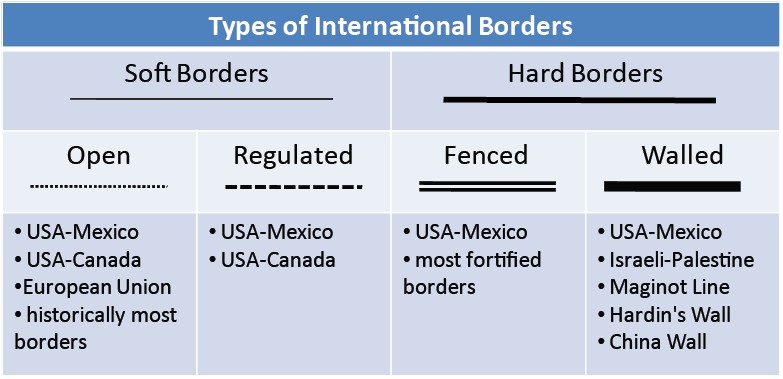Ingolf Vogeler, Types of
International Borders
along the U.S.-Mexico Border
Historically, only large empires, such as the Chinese and Roman empires, and centralized and prosperous nation-states, such as France and Germany, tried to enforce their borders from adjacent land-based national groups and states. Geographically, international borders are expressed in varying degrees of severity: border markers, custom and immigration controls for passports and visas, fences, walls, border guards, and even national military troops.
Open Borders
Controlled Borders
Hard Borders
Border types can be classified into soft and hard borders. Soft borders include open and regulated and controlled frontiers. Hard borders, referred to in this paper as fortified borders, include wire fenced borders; wire fenced and walled borders; walled borders; and militarized borders. Examples are provided for each sub-type:
